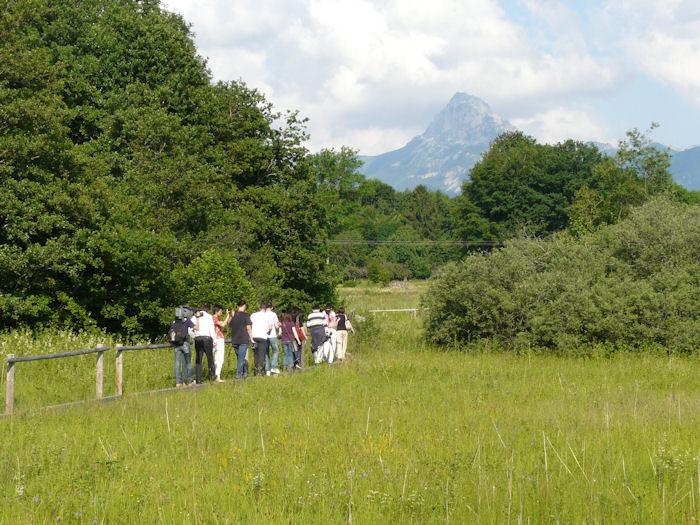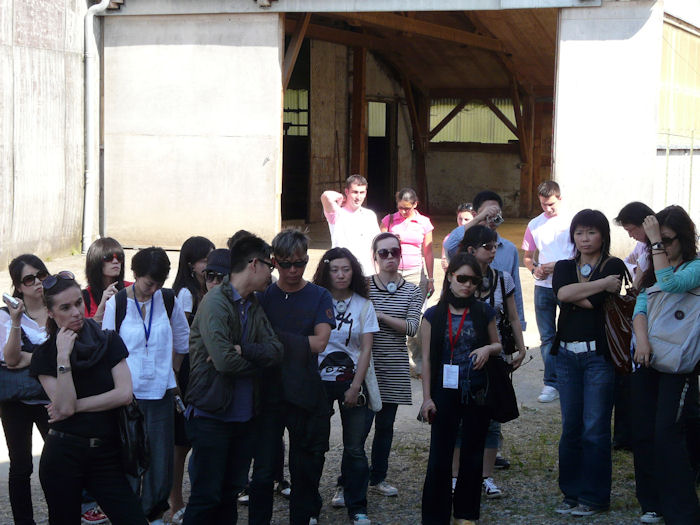Danone-Evian's Journalists' Tour '08
Presentation on Ramsar for the Danone-Evian journalist tour 08
 In a meeting organized by Danone-Evian, 30 June-3 July 2008, in Evian, France, about 60 international journalists from the Netherlands, Austria, the USA, and Asia, with representatives of Singapore and particularly of China, participated in the “journalist tour 08”.
In a meeting organized by Danone-Evian, 30 June-3 July 2008, in Evian, France, about 60 international journalists from the Netherlands, Austria, the USA, and Asia, with representatives of Singapore and particularly of China, participated in the “journalist tour 08”.
During the first day, which was devoted to sustainable development, Ramsar staff presented the issues and challenges related to water protection and in particular to wetlands, and explained its partnership with the private sector.
Ramsar’s Tobias Salathé, Senior Regional Advisor for Europe, described on the one hand the diversity of wetlands, from the glaciers to the sea, while including peatlands, marshes, rivers, lakes, mangroves, deltas, coral reefs, and on the other hand, the close relation that exists between the protection of these exceptional zones and the well-being of humankind, for its health, its economic activities and its leisure.
This partnership allows us, in the north as well as in the south, to help in raising awareness of the current risks associated with protection of these resources by improving information and knowledge about these places and facilitating exchanges between the various stakeholders – for example, through the organization of World Wetland Day or the installation of information centers open to the public, such as the Pré Curieux in Evian.
A new program, following these same objectives, known as the “Ecoles de protection de l’eau” has been set up. The three pilot projects, presented by David Graham from Danone, will begin this month, in July, and are located in Nepal, Thailand, and Argentina. They will help the protection of important wetlands in social, ecological and economic terms (http://www.evian-ecolesdeleau.fr/).
This first day was also the occasion to visit the Plateau de Gavot wetland, origin of the Evian mineral water. Jean Christophe Bligny, an hydrogeologist working for Evian, explained the slow course of water through the underground rocks. Indeed, it needs up to 22 yearsfrom water infiltration in the Plateau de Gavot to its resurgence for its drinkable source. Since 1992, the importance of preserving this resource has been encouraged by the creation of an association, the APIEME, the objective of which is to allow at a local level, farmers, authorities and Evian officials, to work together in order to protect water quality.
-- Nathalie Rizzotti, Ramsar

Visit to Plateau de Gavot wetland, first step in the Evian water’s slow course to its drinkable source near Lac Léman (Lake Geneva).

Presentation to the journalists of the ecological activities on the farm of Mr. Grivel, APIEME member.